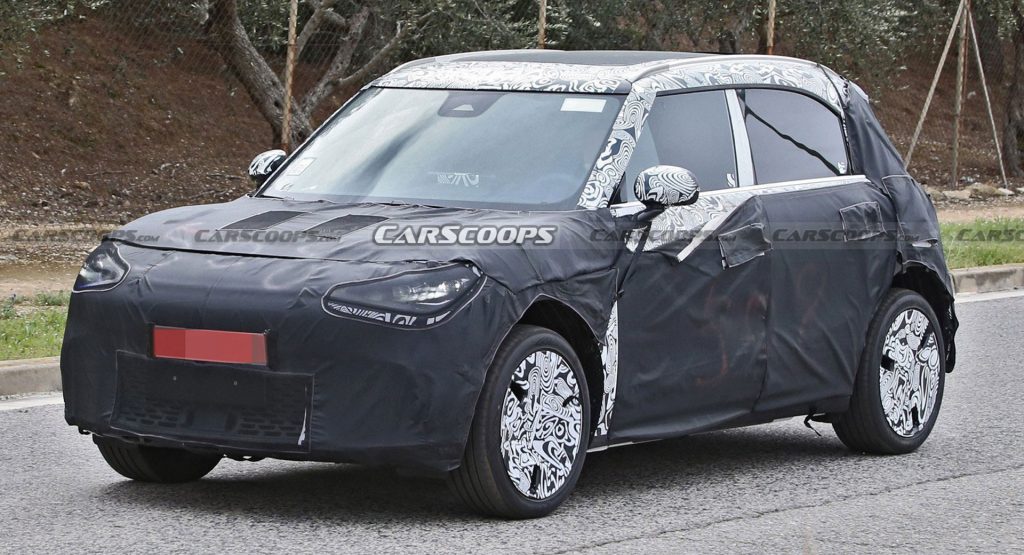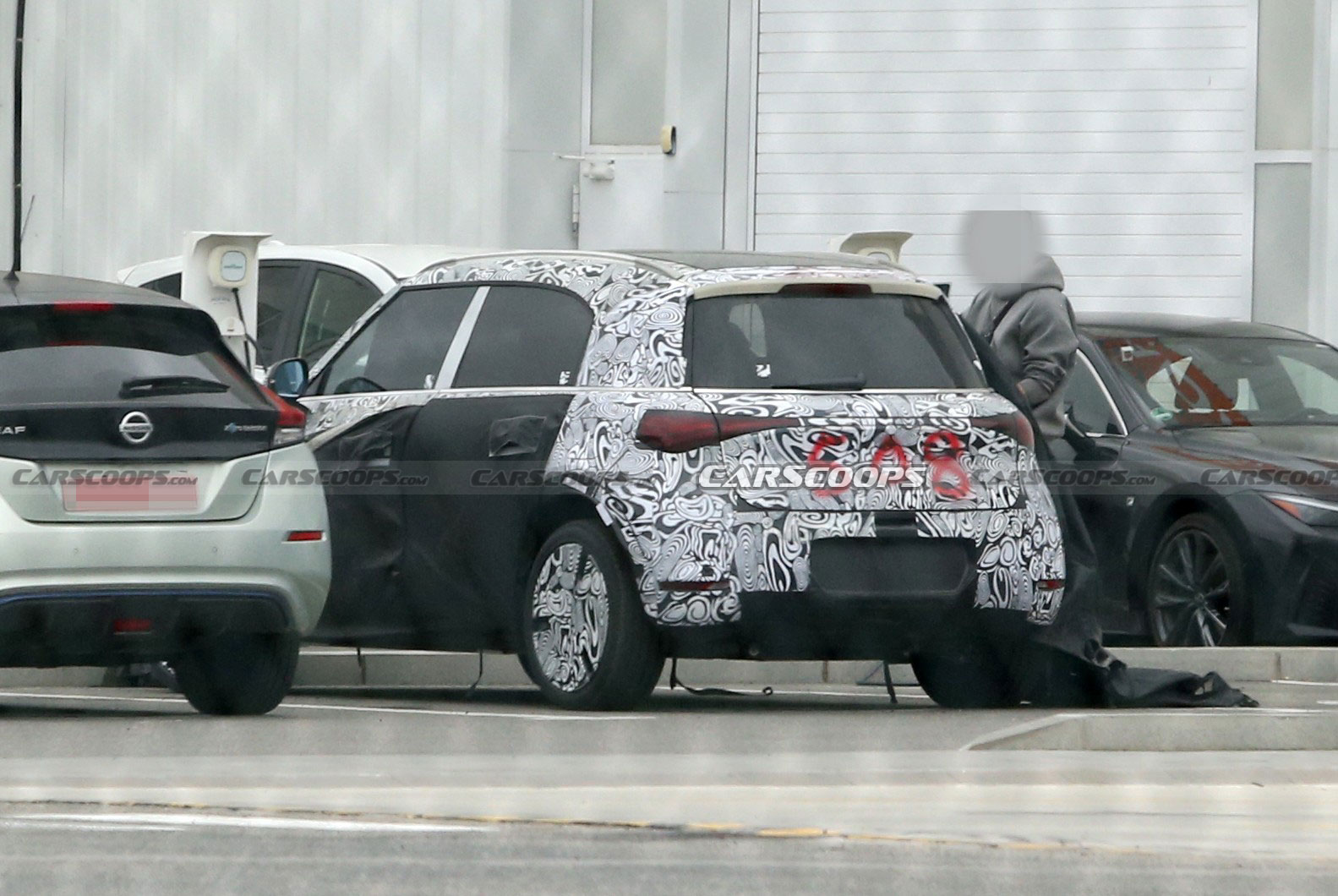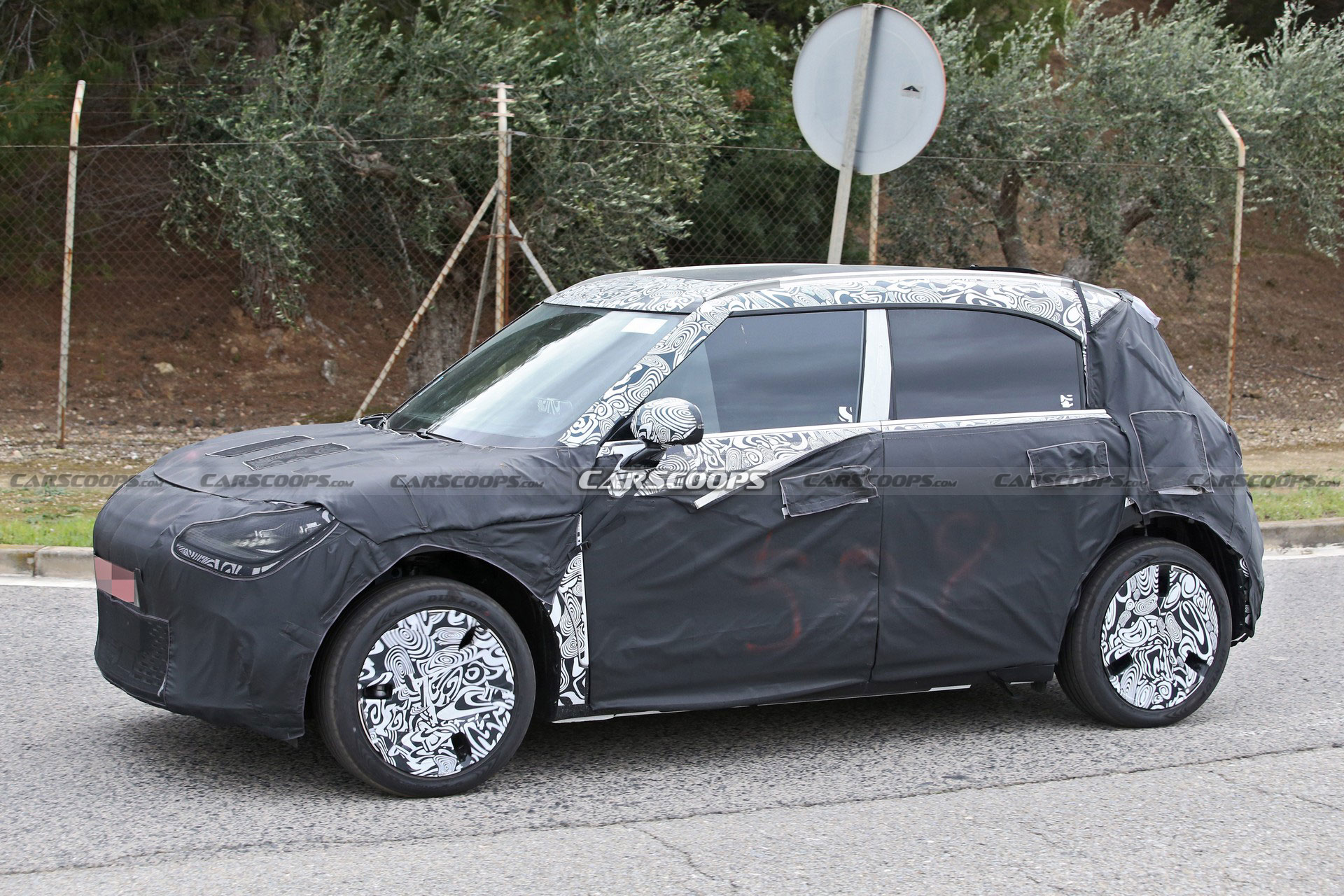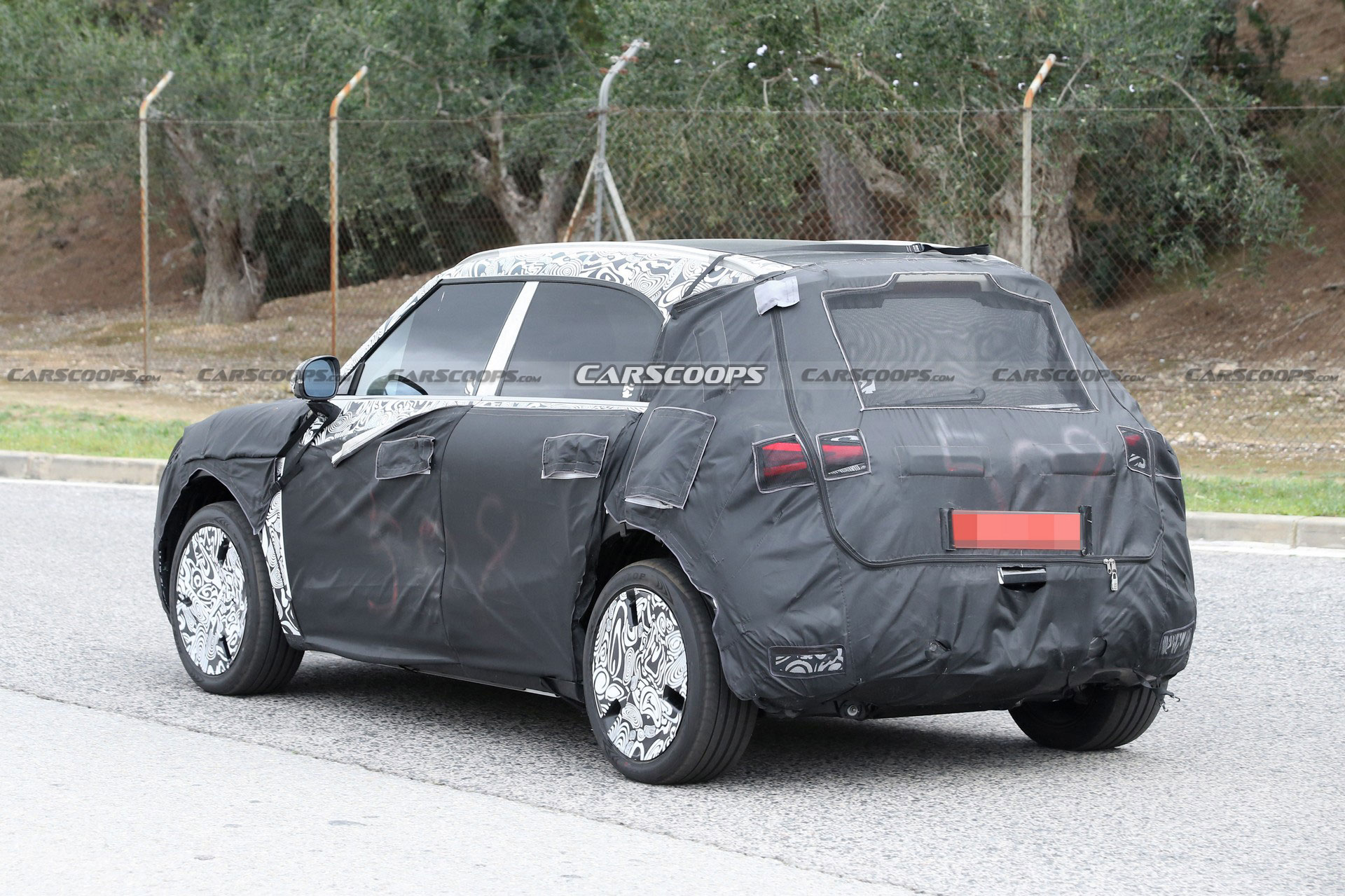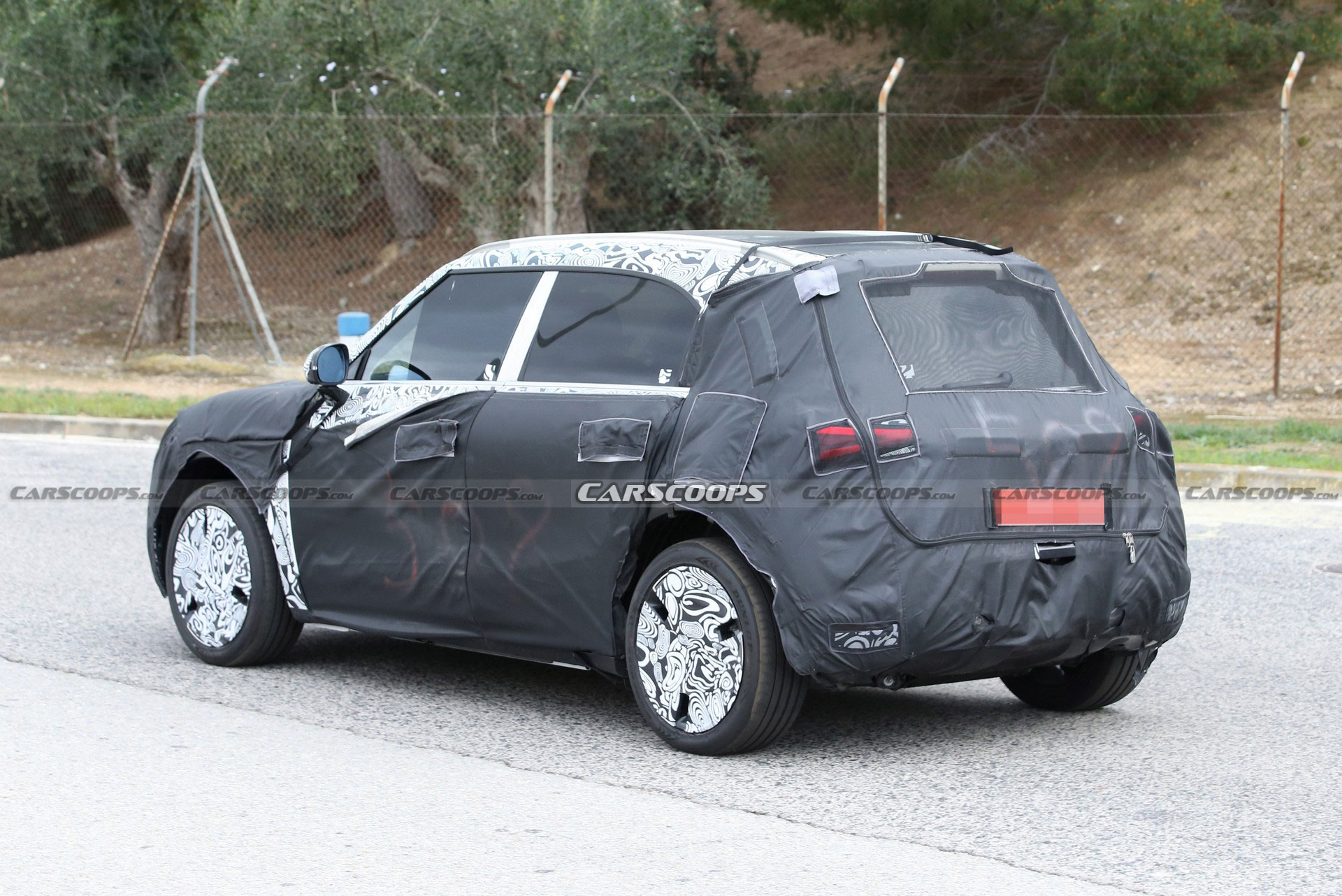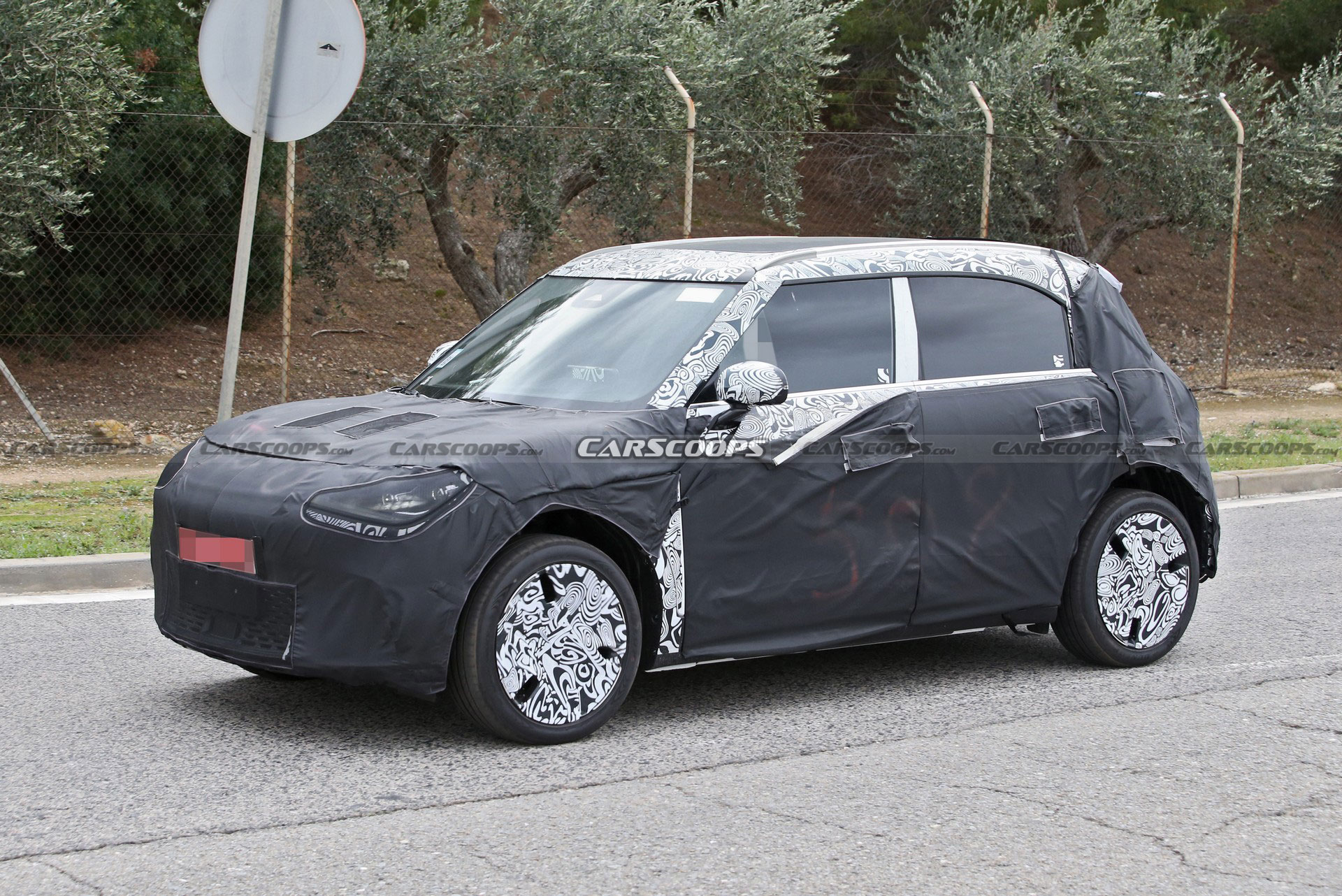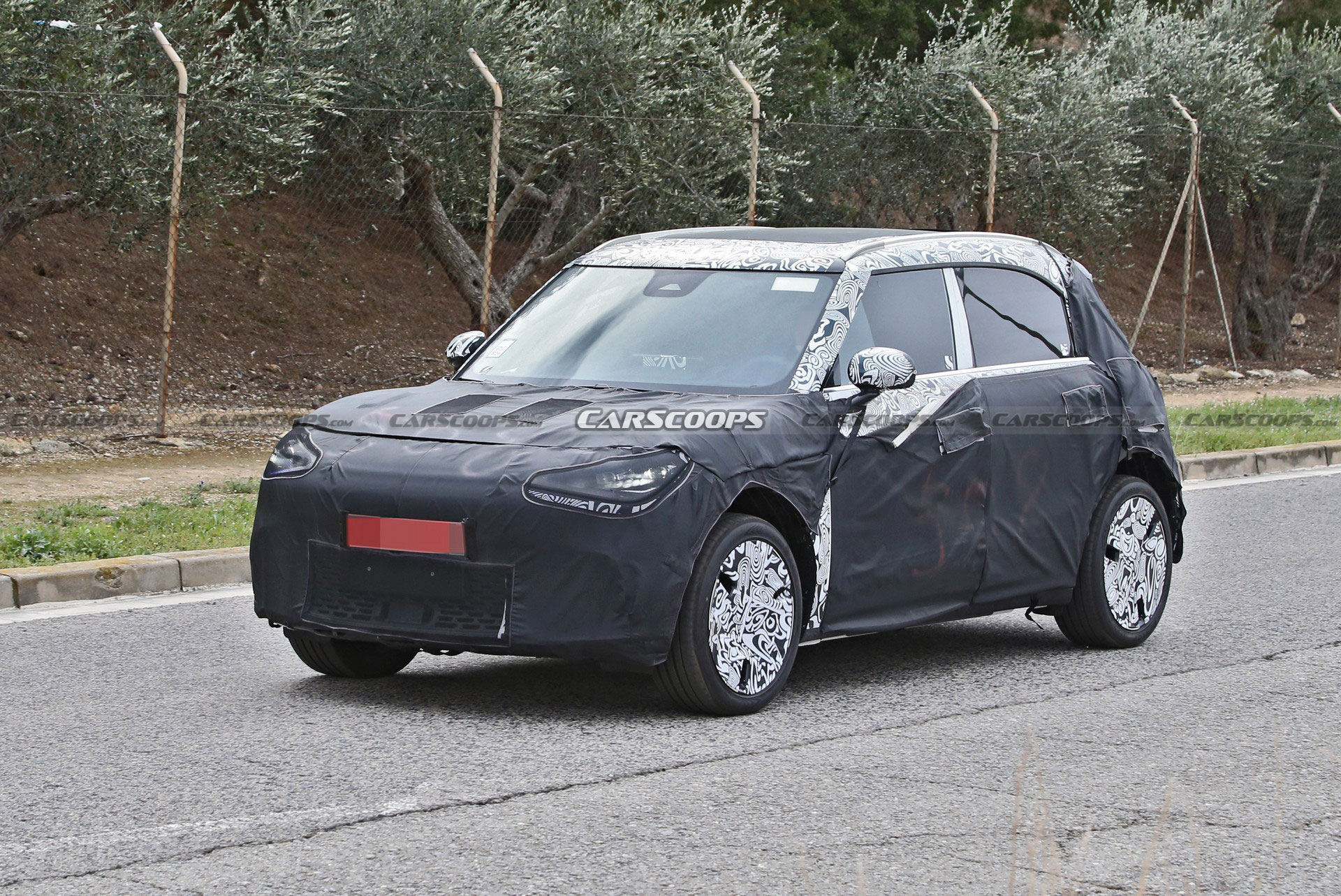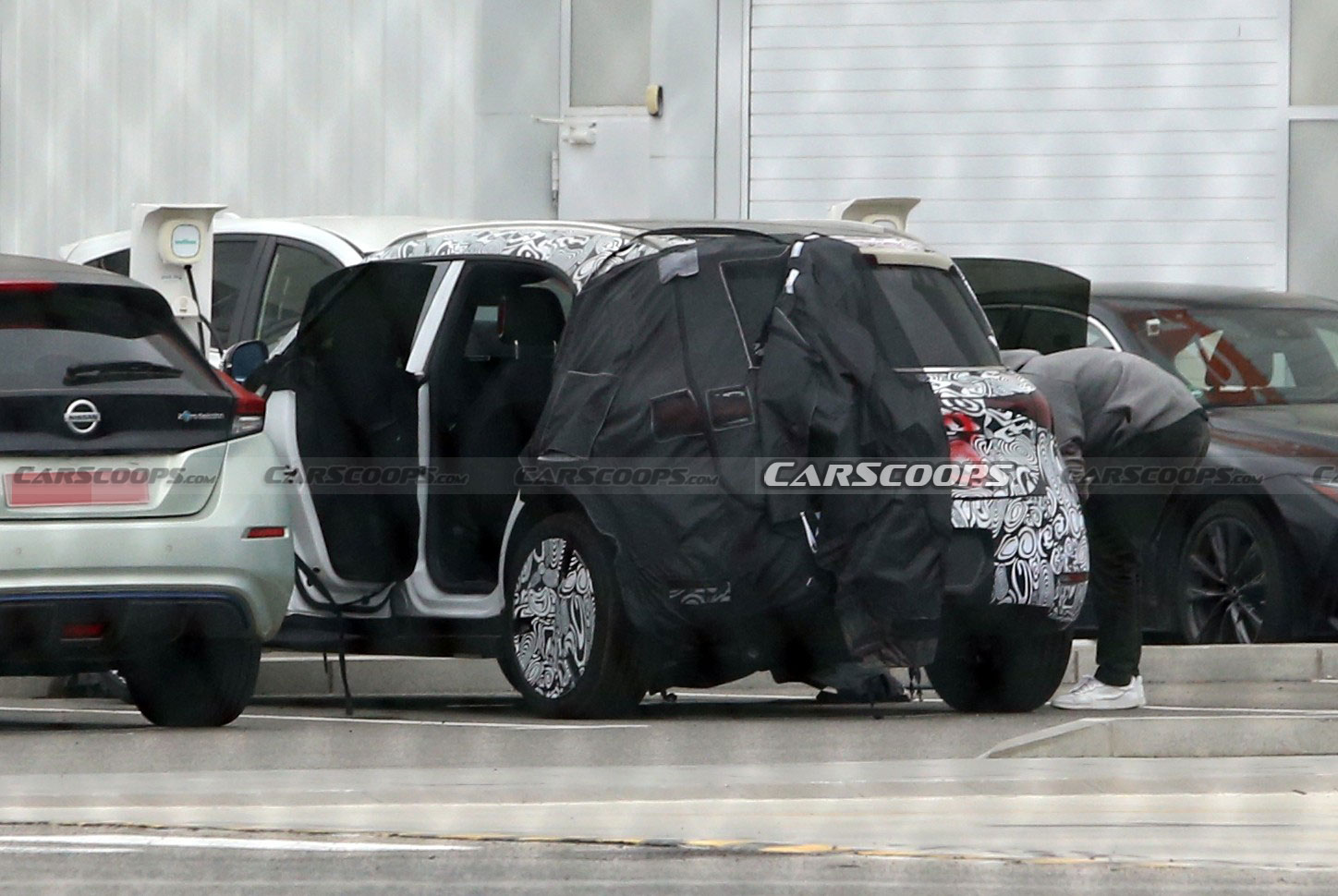After a few turbulent years, Smart is preparing for a “renewal of its brand, product and business model.”
That charge will be lead by the all-new #1 crossover, which was previewed by a concept at last year’s Munich Motor Show.
Rumored to debut on April 7th, the production model is heavily disguised but stays true to the concept. While there isn’t much to see this time around, previous teasers have revealed the #1 will have sweptback headlights with integrated daytime running lights that combine with a light bar to form an X-shape. The model also has air curtains and an active shutter mesh grille.
Also Read: We’re #1 – Smart Unveils Hashtag Naming Convention For New EVs
The “Sensual Product” design philosophy allows the crossover to have a drag coefficient of 0.29 and this is aided by flush-mounted door handles with an ice breaking function. Smart hasn’t said much about the latter, but noted the door handles will work normally even when the crossover is covered by a thin layer of ice.
Other notable highlights include curvaceous bodywork and a distinctive flowing roof that merges into the thick C-pillar. The #1 also features a rear charging port and taillights that are connected by a thin strip.
While spy photographers didn’t get a look inside, previous patent images have shown the model will have a flowing dashboard and oval-shaped air vents. They’ll be joined by a floating center console and five seats that offer “legroom and elbow room on par with vehicles from higher segments.”
Smart has been coy on specifications, but has previously said the #1 will ride on a purpose-built BEV architecture that offers the “highest level of dynamic handling and passive safety.” We can also expect “highly innovative driver assistance systems” and fast-charging technology.
More recently, the company said the #1 will have an advanced battery temperature control system that maintains the optimum battery temperature. Owners will also be able to pre-set their driving schedule to automatically pre-heat the battery and ensure optimized charging as well as output efficiency.




